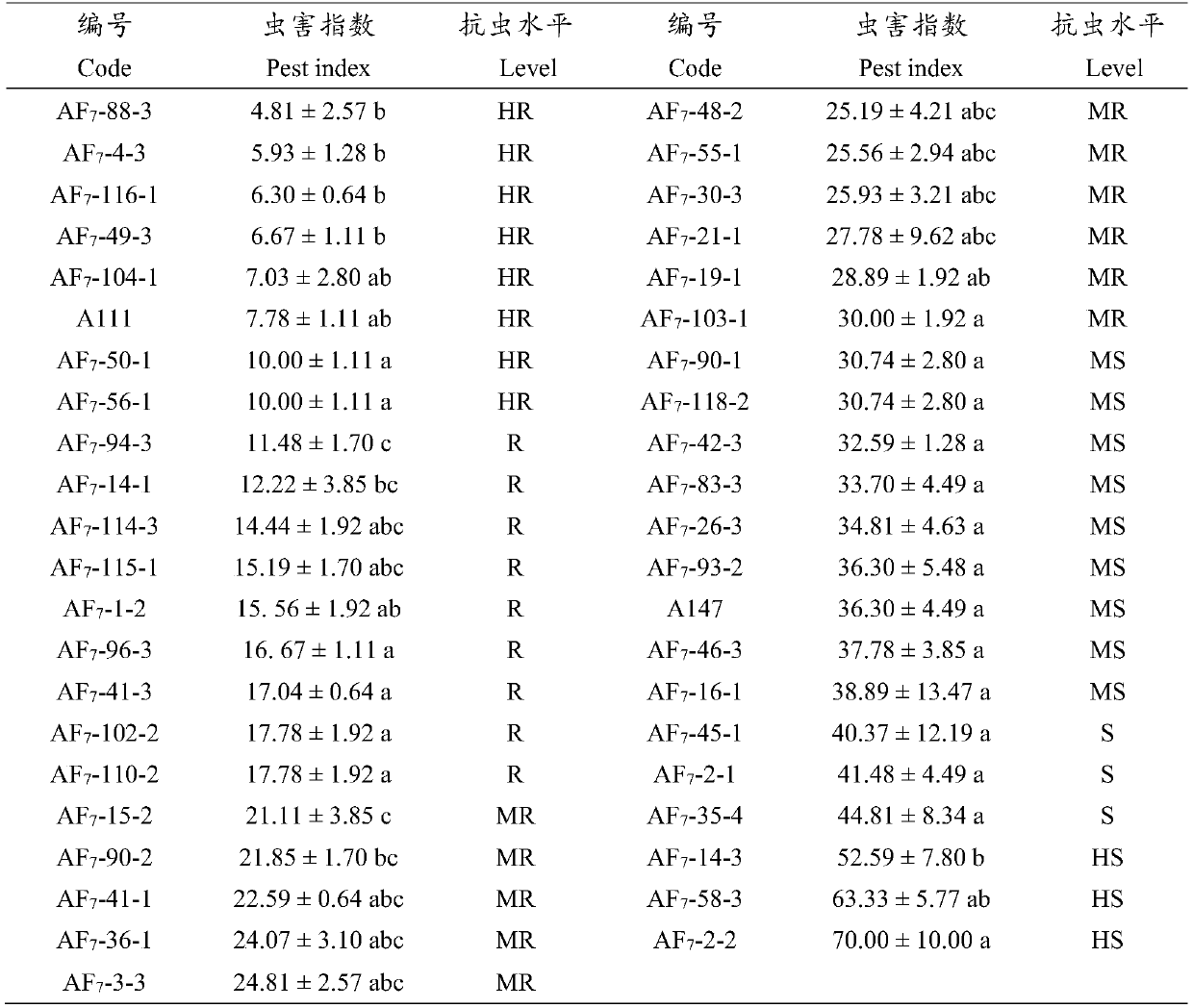Germplasm improving method for asparagus beans
A technology of cowpea and germplasm, applied in the fields of plant genetic improvement, botanical equipment and methods, applications, etc., can solve the problems of weak research foundation of distant hybridization, improvement of insect resistance of long cowpea, etc.
- Summary
- Abstract
- Description
- Claims
- Application Information
AI Technical Summary
Problems solved by technology
Method used
Image
Examples
Embodiment
[0031] Distant hybridization to construct segregated populations:
[0032] Long cowpea A147 was selected as the female parent, with light green pods, white corolla, long pods, and early-medium maturity; rice bean A111 was selected as the male parent, with dark green pods, purple-red corolla, short pods, and mid-to-late maturity. From 2012 to 2014, through several times of distant hybridization, in June 2014, a distant hybrid combination of long cowpea and rice bean was obtained (cowpea A147 was the female parent and rice bean A111 was the male parent) F 1 4 generation seeds; put F 1 All generation seeds were sown to obtain 867 F 2 Subsequent generation seeds, from 2015 to 2017, continuously add generation to F 6 generation. Specific process: F 2 Generational single-seed seeding, obtained the full separation spectrum of F 3 generation; respectively sow F 3 Generation seeds, randomly select a representative individual plant in its strain population, and obtain F 4 substit...
PUM
 Login to View More
Login to View More Abstract
Description
Claims
Application Information
 Login to View More
Login to View More - R&D
- Intellectual Property
- Life Sciences
- Materials
- Tech Scout
- Unparalleled Data Quality
- Higher Quality Content
- 60% Fewer Hallucinations
Browse by: Latest US Patents, China's latest patents, Technical Efficacy Thesaurus, Application Domain, Technology Topic, Popular Technical Reports.
© 2025 PatSnap. All rights reserved.Legal|Privacy policy|Modern Slavery Act Transparency Statement|Sitemap|About US| Contact US: help@patsnap.com

